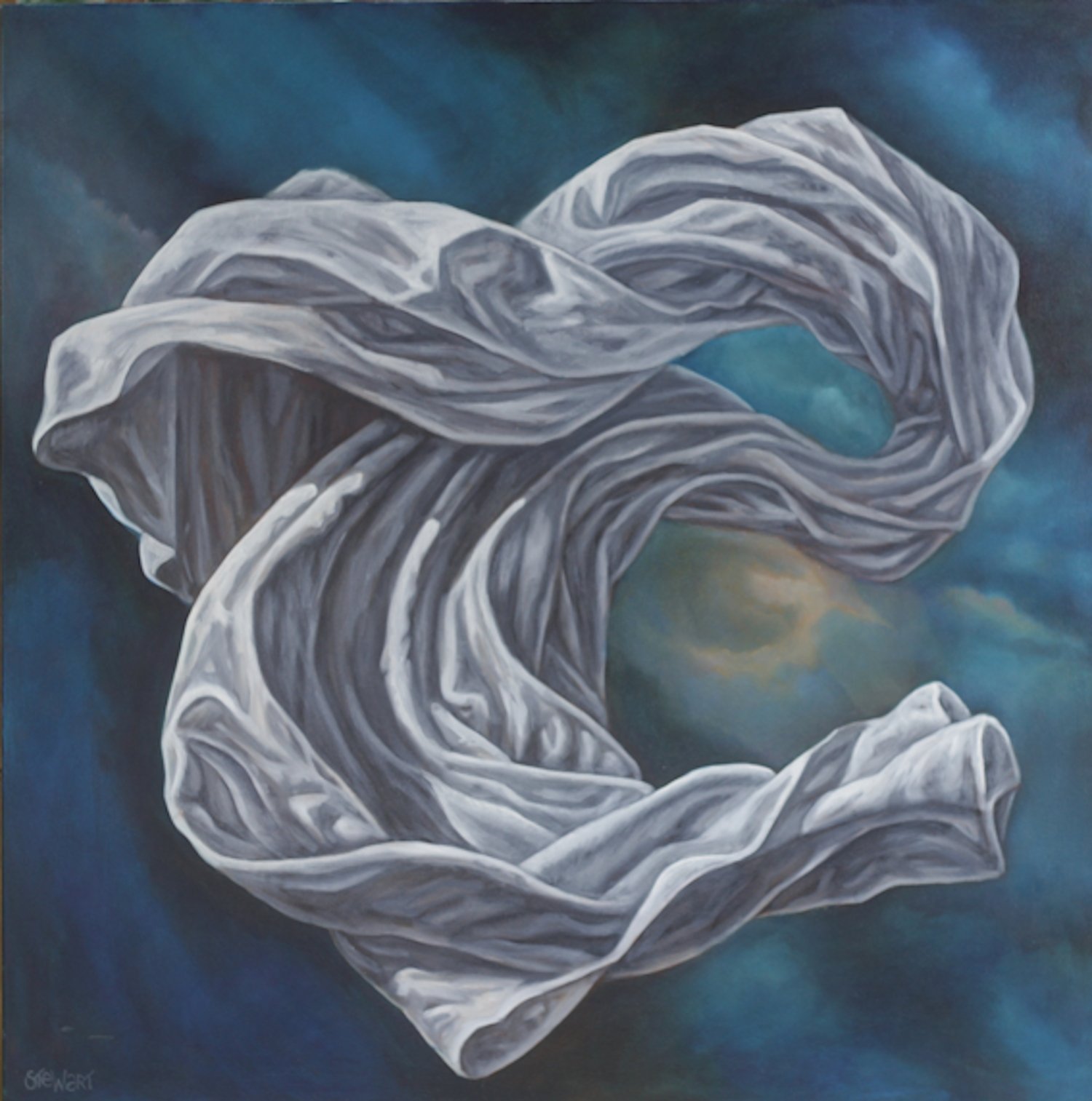The Wuthering Series
In The Wuthering Series, drapery becomes a vessel - of emotion, memory, resistance, and release. Suspended in vast skies, each fabric twists with the force of something unseen: a storm, a soul, a moment of reckoning. These works do not depict stillness, but transformation. Caught between gravity and grace, they echo the haunting ecstasy of Romantic yearning, the spiritual abandon of Baroque art, and the quiet rebellion of feminine power. Each painting is a threshold - between beauty and collapse, softness and strength, life and whatever lies beyond.
With richly coloured, storm-lit skies and drapery flung upon the winds, Wuthering evokes a sense of romance, freedom, and exhilaration. Inspired by the tropes of gothic literature, these paintings blend melodrama with minimalist form, capturing fleeting moments of beauty amid turbulence.
The Gothic tradition, rooted in Shakespearean tragedy with its omens and spirits, Milton’s Paradise Lost with its grand themes of creation, fall and redemption, and Burke’s treatise of the Sublime, where nature’s vastness overwhelms human frailty, informs the emotional landscape of this series.
The Gothic returns to us again and again, a reflection of deep-seated fears: of decay, of change, of the unknown. It speaks to eras of disruption, where the reverberations of the past shape the uncertainties of the present, a poignant lens for our own time of political, social, and climatic upheaval.
The word wuthering itself means "of the weather," and recalls Brontë’s Wuthering Heights, with its wild storms and unrestrained passions. Yet, rather than dwell in fear, these paintings celebrate resilience: drapery soaring against the storm, embodying beauty, grace, and freedom in the face of chaos.



